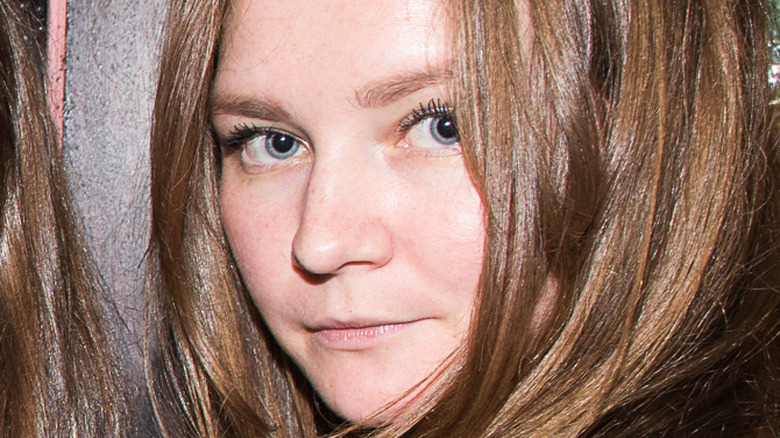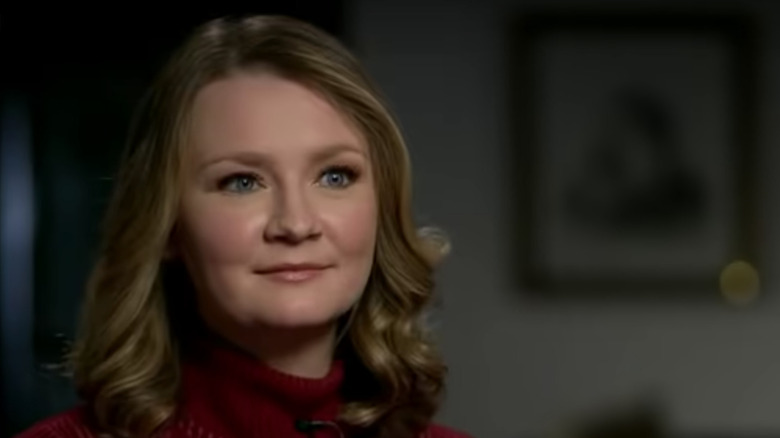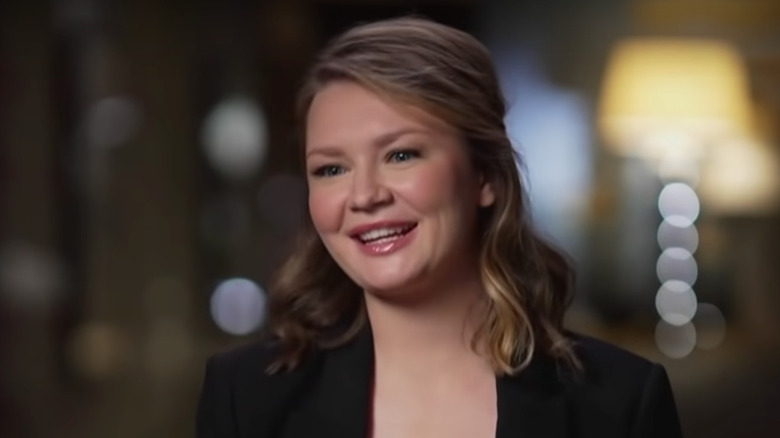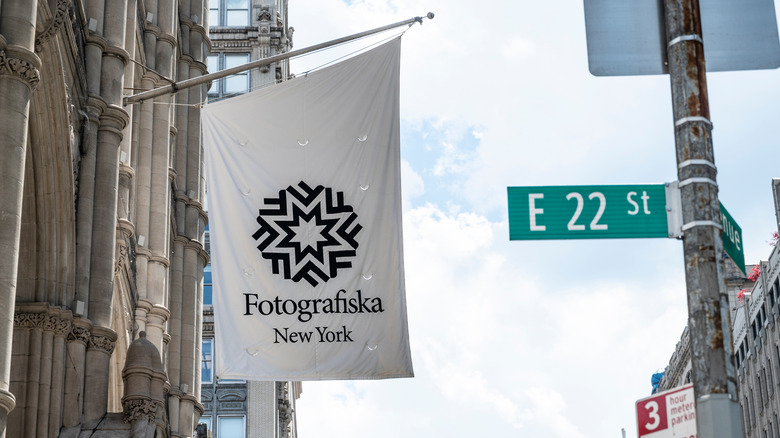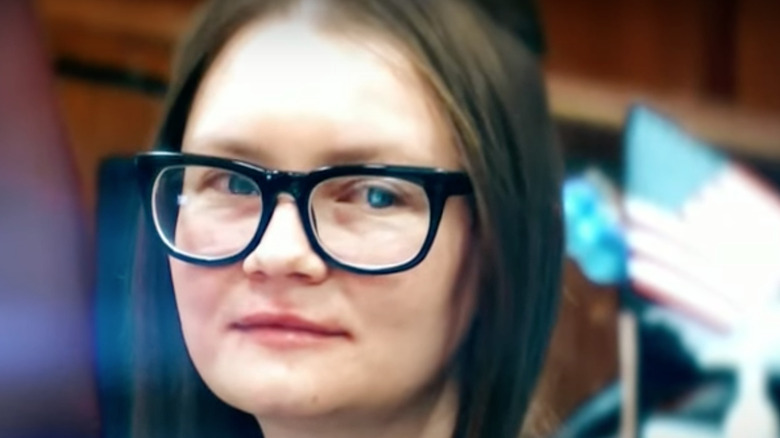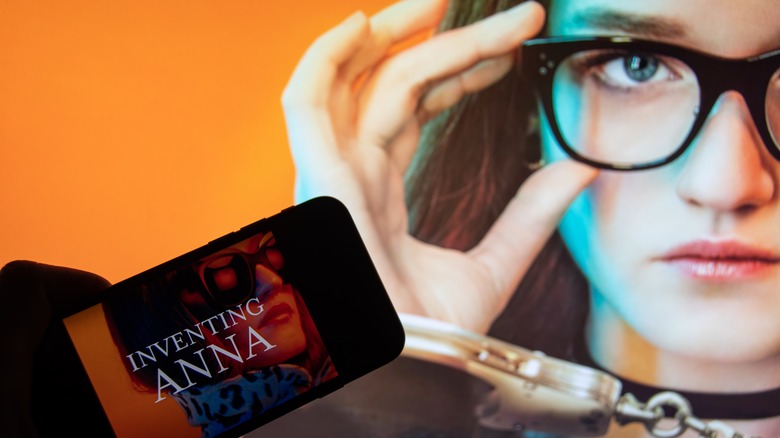The Truth About Anna 'Delvey' Sorokin's Art Career
Most people know of Anna "Delvey" Sorokin as the fake German heiress who conned her way through New York society before getting caught and spending several years behind bars. Her story, which has been the subject of countless articles and podcasts, has even inspired its own Shonda Rimes-led show on Netflix, "Inventing Anna."
But while Anna's name, occupation, and history have changed over the course of her life, there has been one fairly consistent aspect of personality: a self-professed love of art. It was through an arts and lifestyle magazine that Sorokin first got a taste of high society, and it was art that motivated many of her cons — including swindling a bank for more than $100,000, as documented by The New York Times.
Though it is very possible that Sorokin's passion for the arts is a personality trait cultivated for her schemes, the con artist's history suggests that it might just be one of her genuine attributes.
Art was Sorokin's first foot in the door
Before Anna Sorokin had made her way to New York City, she actually worked as an intern in Paris for Purple Magazine. The magazine was known for its chic and upscale contributors and audience, as well as its dedication to the arts. "We wanted to support the artists around us that no one else supported, much less talked about," declared the magazine's editor-in-chief, Olivier Zahm, in an affiliated book titled "Purple Prose" (via Left Bank Books).
It was among her tony colleagues at Purple that Sorokin first appeared to have started creating her image and backstory. According to Tatler, she was only paid a little over $500 a month for her internship. Because of this, her father not only paid her rent but also later bought her a car and dealt with numerous "demands [for] money" as she curated a new lifestyle.
Though living in Paris and working for a prestigious magazine may seem like a dream for most, it clearly was not enough for the aspiring con artist, and she soon made her way to New York, armed with new knowledge and a new backstory.
Her knowledge of the arts kept the grift alive
Anna Sorokin's knowledge of popular art trends helped her facade as a wealthy heiress. Sorokin's Instagram feed had a constant stream of famous or new art, from Laurent Grasso's "Anechoic Wall" to one of the untitled works of Agnes Martin. These photos, shared to her thousands of followers, gave the appearance that she was not only a well-educated enthusiast but also wealthy enough to travel to the Eva Presenhuber Gallery in Zürich one day and then the Gagosian Gallery in Paris the next.
But it wasn't just the appearance of famous art in her feed that helped perpetuate her con. Her captions were often well thought out to give the impression that she was in the know and part of the elite art world. "Her pics are almost always lightly but knowingly captioned, often simply identifying the artist to convey knowledge of the particular art brand (e.g. simply stating 'Condo,' meaning George Condo, next to a work by the New York painter)," noted an article by Artnet.
An arts-focused club was one of her biggest ambitions
The fact that Anna Sorokin had a posh Instagram feed and was affiliated with an exclusive and elite magazine gave her credibility when making her way into elite circles. But the benefits weren't just based on appearances. As detailed by The Cut, Anna's Purple internship helped her get close to the magazine's editor-in-chief, Olivier Zahm, as well as contributor André Saraiva. The two men had incredible social connections, and the fact that she "appeared to be tight" with the duo helped her form new friends.
Moreover, it also lent credence to her goal of opening an arts-focused social club, which she likened to a Soho House-type of community that she called the Anna Delvey Foundation, or the ADF. According to The Tab, she had hoped to showcase talents such as architect Gabriel Calatrava, hotelier André Balazs, and Nobu founder Richie Notar — and had even spoken to the trio about her ambitions.
As detailed by A&E TV, Anna was so passionate about creating this space that she forged and photoshopped fake documents to send to banks so that she would be given a loan for the venture. The requested amount was a whopping $22 million dollars, much of it needed to rent a space on 22nd Street and Park Avenue. Fortunately, things started to fall apart before anything was approved.
Sorokin's new art career
Following her arrest in 2017, Anna Sorokin did not stop creating art. In fact, she would often post sketches on her Instagram account from jail, which she later claimed was her way of communicating with her fans in a way that would not cause issues when applying for parole. But Sorokin did not post all of her art, and the pieces that remained unseen are going to be displayed during a solo show to take place later in April or May, per Forbes.
According to Chris Martine, the man organizing the show, there will be around 15 to 20 works by the infamous con artist, and each will likely come with a price tag of around $10,000 or more. The artwork will cover aspects of her life over the past few years — spanning from before her arrest to after her release from jail — and give viewers a glimpse into "her side of the story," Martine claimed.
However, there are some hiccups that could dash any hopes of taking the art world by storm. Most glaringly, Sorokin is currently in U.S. Immigration and Customs Enforcement custody following allegations that she violated her visa. As noted by People, this will likely lead to her deportation.
She has also been the subject of art projects
While the faux German heiress has struggled to put on her own show, she has ironically been the star of another. As detailed in The Art Newspaper, New York-based artist and curator Alfredo Martinez recently put out an exhibition in late March titled "Free Anna Delvey." The show had pieces where Anna was the center of attention — and generally displayed in a sympathetic, if not overtly positive, light.
"We want to show she has grassroots support from the art world," Martinez said, emphasizing that women artists had shown particular interest because of the misogyny they had received in the business. "Especially in the art community, women completely see what's going on. A lot of people, especially the women, feel like the only way to get ahead is to cheat."
For example, one painting showed Anna in a costume and pose that likened her to a House of Savoy princess — hardly a condemnation of a woman who stole hundreds of thousands of dollars. The artist, Rina Oh, said (via The Art Newspaper) that while she doesn't condone crime, she admires the fact that Anna "[used] these men in the male-dominated art world to make herself into this personality that really didn't care and strived to get ahead. Which is a very New York thing to do."
Incidentally, interest in "Inventing Anna" also skewed female, with ratings company Nielsen estimating that around 70% of viewers were women (via The Hollywood Reporter).
